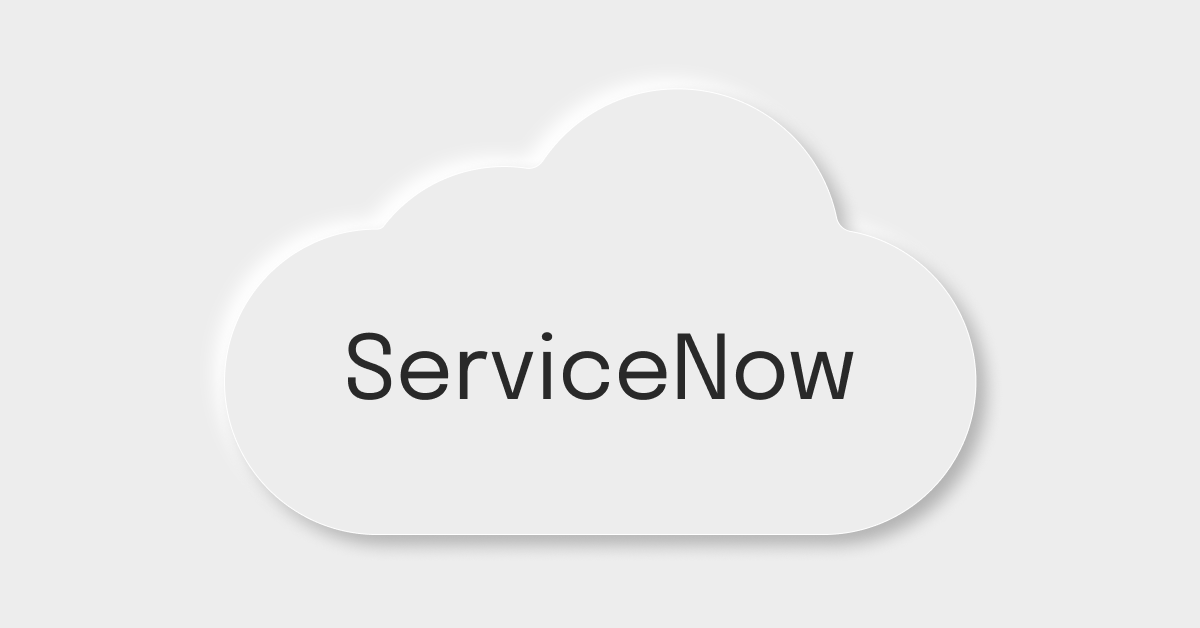How AIOps modernizes the ServiceNow CMDB

Working with ServiceNow’s Configuration Management Database (CMDB) can feel overwhelming. Maybe you’re trying to understand the foundational aspects of the CMDB or looking for ways to integrate it into your IT processes.
If you want to get maximum value from your ServiceNow CMDB, you might be asking questions like:
- How accurate does my CMDB need to be?
- Can AIOps work with an incomplete or outdated CMDB?
- Does my team have the skills to use the ServiceNow partner ecosystem tools?
This blog will explain the key aspects of ServiceNow CMDB and share practical tips and tools to improve your CMDB experience.
What is the ServiceNow CMDB?
The ServiceNow Configuration Management Database is critical for running processes like incident, problem, and change management. Using a CMDB like ServiceNow’s is an ITIL best practice. It helps IT teams manage the relationships between configuration items (CI), maintain asset data, and manage IT assets.
ITSM platforms like ServiceNow use a CMDB as a trusted single source of truth for all IT assets and their relationships. While most people use the built-in CMDB, you can also connect other databases to ServiceNow.
Top ServiceNow CMDB use cases
A ServiceNow CMDB can help IT teams resolve incidents faster and is helpful in other areas, such as compliance, security, and financial management.
- Incident management: During outages, the CMDB shows what assets are affected so teams can fix the problem faster.
- Change management: It helps predict the impact IT systems changes for smoother rollouts and fewer unexpected disruptions.
- Problem management and resolution: CMDBs show connections between assets, helping IT teams identify the root cause of recurring or complex issues.
- Asset lifecycle management: CMDBs track and manage the entire lifecycle of IT assets, covering every stage from procurement to disposal. This lifecycle improves the efficiency of use, timely maintenance, and proper decommissioning, saving costs and improving operations.
Benefits of using a CMDB with ServiceNow
A CMDB brings siloed data together in one place, making it easier to manage. This visibility helps IT teams eliminate outages, significantly reduce mean time to resolve (MTTR), and remain compliant. Plus, they have context for better decision-making, risk assessment, report generation, and software and cloud expense monitoring.
Visibility and planning: A CMDB shows all IT assets in one view, enabling streamlined management of digital lifecycles across all tables, views, and apps. Full visibility also allows technology managers to plan broader enterprise architecture strategies.
Improved IT operations: CMDB enhances essential ITSM functions, such as risk evaluation during change management, and facilitates compliance by tracking audit histories and control measures.
Data-driven results: Teams can analyze data to make better decisions about optimizing resources and predicting potential issues, leading to data-driven outcomes and enhanced operational workflows and efficiency.
IT cost management: In IT financial management, having specific codes for applications and services is crucial. It assists in distributing bills correctly and overseeing other financial aspects.
Challenges of the ServiceNow CMDB
The ServiceNow CMDB can be complex to set up and maintain. It requires accurate data and ongoing updates to ensure configuration items are current and reflect the actual IT infrastructure. However, without proper governance and management processes, a CMDB can quickly become outdated or filled with duplicates, diminishing its value for IT operations and decision-making.
- Data quality problems: Data accuracy problems are one main reason CMDBs don’t provide the expected business benefits. This issue intensifies as the volume and speed of configuration data increases.
- Outdated information: If the CMDB isn’t updated regularly, it can cause delays or disruptions.
- Unclear relationships and system dependencies: CMDBs don’t clearly show the dependencies between servers or applications, making it harder to understand the impact of issues.
- Challenging implementation: Without knowledge of the ServiceNow partner ecosystem, implementation can be slow and frustrating.
How BigPanda modernizes the ServiceNow CMDB
BigPanda uses ServiceNow CMDB data to enrich alerts and provide the context to address and resolve incidents quickly. The platform enhances ServiceNow’s IT Service Management (ITSM) and IT operations management (ITOM) capabilities in many ways, including:
Service mapping for dynamic infrastructures.
- Full stack, real-time topology map per incident: Leverage ServiceNow CMDB data (even if incomplete) and outside data sources (APM, cloud, etc.) to visualize and better understand the scope of impact no matter how dynamic the environment is.
- Existing service maps help BigPanda correlate and prioritize incidents per business service.
Event Enrichment Engine offers cross-domain enrichment.
- CMDB Override Existing Option: The ServiceNow integration now supports the enrichment flag option for better incident enhancement. The flag allows overriding a tag’s existing value with a user-defined value set in BigPanda enrichment maps.
- CMDB Aggregation map: The CMDB aggregation map allows you to populate BigPanda alerts with information from multiple ServiceNow records, such as in relationship tables, or a single enrichment. This provides enrichment flexibility by supporting one-to-many relationships between query keys and results in the CMDB integration map.
Ticket reduction and automation for high-volume monitoring data.
- Reduce alerts by up to 99%: Correlate thousands of alerts into high-level incidents with best-in-class machine learning.
- Reduce ticket volume by up to 99%: Auto-create ServiceNow tickets.
- Reduce manual effort: Bi-directional sync keeps ServiceNow tickets updated as BigPanda incidents evolve.
Automated root cause analysis for continuously delivered applications.
- Quickly identify root cause: BigPanda AI correlates changes from ServiceNow (and other tools) that may have caused the incident so teams can quickly and easily identify and roll back changes to resolve outages.
- By collecting change data from sources like CI/CD pipelines, BigPanda can use AI/ML to suggest potential root cause so teams can triage and resolve incidents faster.
Integrating AIOps with your CMDB software gives you deeper insight into your IT environment. Instead of just listing components, AIOps provides real-time, advanced analysis. This approach is a CMDB best practice, showing the interrelations of various elements in complex, hybrid IT settings.
Unlock ServiceNow utility and improve incident management with BigPanda
Implementing ServiceNow can be challenging for companies without sufficient resources, and the complexities of its partner ecosystem add to the task. However, BigPanda bridges this gap, enhancing ServiceNow’s benefits. BigPanda simplifies the adoption of ServiceNow by managing incidents, changes, and CMDB.
The ever-evolving nature of IT environments means ServiceNow’s CMDB isn’t static. BigPanda enhances its value by merging data from ServiceNow’s CMDB with other sources, offering a real-time view of business services. As BigPanda customer Udo Strick from Waste Management commented, “With [BigPanda], we enrich our events using CMDB data, adding extra context to the tickets we generate.”
BigPanda ingests change data from various platforms, including ServiceNow, and correlates it with alert data. This provides a clear understanding of the cause and effect of changes, helping to reduce MTTR and ensuring that the impacts of changes are detected before they escalate to significant incidents.
Although CMDB data can show the status of your infrastructure, if your company doesn’t have a CMDB, BigPanda can still provide considerable value.
While many other tools require a mature and robust CMDB to be effective, BigPanda is different. The correlation patterns created by our explainable and pragmatic AI can effectively identify ways to correlate alerts and reduce noise even without a CMDB, with compression rates up to 70%.
Modernize your CMDB with AIOps
AIOps from BigPanda significantly enhances ServiceNow’s utility, modernizes the CMDB, and maximizes the value of your ITSM investments. With BigPanda, your organization can reduce ticket volumes, prevent unnecessary escalations, minimize blind spots, and prevent recurring incidents.
These enhancements translate into significant real-world business outcomes. Autodesk integrated the BigPanda platform with ServiceNow to establish Smart Ticketing. With the Auto Sharing feature, BigPanda automatically notifies key team members and provides tickets that include critical incident information and real-time updates. This feature helped Autodesk streamline its workflow across the incident lifecycle, from detection to investigation to remediation. As a result, Autodesk reduced incidents by 69% and improved MTTR by 85%.
Check out our latest e-book to learn how BigPanda AIOps can transform and accelerate your incident management practice natively within ServiceNow ITSM Standard without the need to upgrade.




